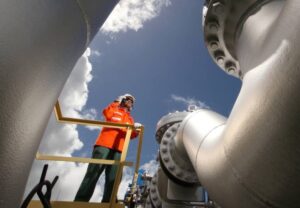
(Argus, 30.Apr.2021) — Brazil is hosting a growing number of green hydrogen initiatives as the government prepares a national hydrogen plan and regulations. Hydrogen specialist Lavinia Hollanda, founding partner at Escopo Energia, spoke to Argus about Brazil’s prospects for this emerging industry.
What advantages does Brazil offer for developing green hydrogen?
Broadly speaking, to produce green hydrogen from electrolysis, you need fresh water and a source of renewable power. Brazil has vast natural resources, significant water supplies and untapped solar, wind and biomass potential that can be used in the electrolysis process or to produce synthesis gas. One challenge is that the bulk of Brazil’s solar and wind potential is located in the northeastern region of the country, which has limited water resources. This means that it might be necessary to invest in water desalination, which is also energy intensive. Brazil also has solid potential to produce hydrogen from ethanol and the country has a consolidated cane ethanol industry, which is another advantage.
What regulations does Brazil need to foster green hydrogen?
At this time, we do not see regulations as a problem. Rather, we see the need for public policies aimed at developing the industry. The government needs to define the role it sees for hydrogen in the Brazilian energy mix and from there, establish compatible public policies. The energy research company (Epe) recently published important hydrogen policy technical directives. The national energy policy council is discussing the issue as well. So we should have a better notion of government hydrogen policies in the near future.
What are the roles of a carbon tax and a carbon market for green hydrogen?
Green hydrogen projects are still expensive compared to projects that use fossil fuels. According to the IEA, green hydrogen from wind power costs $4-10/kg, and $7-17/kg when using solar, while grey hydrogen produced from fossil fuels costs just $1-2.50/kg. But the production of grey hydrogen results in nearly 9.5kg of CO2/kg of hydrogen. As a result, carbon pricing — either through a carbon tax or carbon market — is a way to help green hydrogen projects become economically viable.
What are the best uses for hydrogen in the domestic economy?
We believe that the most suitable application for hydrogen is industrial use. Handling hydrogen is very challenging from a safety point of view and industry knows how to manage it. Furthermore, industry can reduce GHG emissions by replacing grey hydrogen with green hydrogen.
Why bet on green hydrogen when blue hydrogen might make more sense for Brazil with its giant pre-salt gas reserves?
The main purpose of using hydrogen is to decarbonize the economy and so it makes sense to use the type of hydrogen that offers the greatest environmental benefit. There are cases where blue hydrogen could be better. For example, if a fossil-fuel hydrogen plant has access to existing gas transport infrastructure, blue hydrogen makes sense. In these cases, implementing carbon capture can help reduce emissions. We must be cautious about building greenfield gas transport and fossil-fuel based hydrogen plants, because of the high cost of construction for new infrastructure and the long time horizon of these projects. It is essential to weigh whether the option of blue hydrogen from associated gas with carbon capture offers sufficient environmental benefits to justify long-term investments.
Is the intermittency of renewable power sources a problem?
Brazil has a wide variety of renewable energy sources, but intermittency is a challenge. Today, alkaline electrolysis is the most developed, low-cost and long-lasting technology, but it does not operate well with intermittent power supplies. While it is possible to use polymeric membrane electrolysis, which adapts better to intermittent power, experiences with this technology on a large scale are limited.
Where do you see the path of electrolysis technology? Are costs falling?
Costs are coming down. Today, electrolyzers are relatively small scale and studies indicate that larger electrolyzers tend to result in economies of scale and reduce costs per unit of power. The polymeric membrane electrolyzer is the best for intermittent power. Solid oxide electrolysis, which is not commercially available, is more efficient and can co-electrolyze CO2, which provides a destination for CO2 from capture plants. It can also operate as a fuel cell, converting hydrogen into electricity. But there are still challenges because of high operating temperatures, which increases production costs.
____________________

